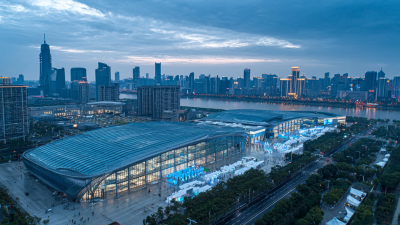7 Essential Tips to Boost Your Group Energy for Team Success
In today's fast-paced work environment, maintaining a high level of group energy is essential for fostering collaboration and achieving team success. According to Dr. Emily Thompson, a renowned organizational psychologist and expert in team dynamics, “The energy within a group can either propel projects forward or lead them to stagnation.” With this insight, it becomes clear that understanding how to effectively boost group energy can significantly impact a team's performance.

As teams face increasing pressure to deliver results, cultivating an environment where group energy thrives is more critical than ever. Engaging activities, open communication, and a supportive culture can contribute to a dynamic atmosphere where creativity and productivity flourish. By implementing strategic approaches to enhance group energy, teams can not only achieve their goals but also enjoy the collaborative process.
In this article, we will explore seven essential tips to invigorate your group's energy and lay the groundwork for sustained success. These practical strategies aim to empower teams, enhance engagement, and ultimately lead to more effective outcomes in any collaborative effort.
Fostering Open Communication to Energize Team Interactions
Fostering open communication within a team is crucial for enhancing group energy and ultimately achieving success. According to a 2021 report by the Project Management Institute, effective communication can improve team performance by up to 25%. This statistic highlights the significance of transparency and dialogue in team interactions, as every team member becomes more engaged when they feel their voices are heard.
Encouraging an environment where feedback is welcomed not only enhances trust but also stimulates creative problem-solving and innovation within the group.
Moreover, organizations that practice open communication see a marked increase in employee motivation and job satisfaction. A study by Gallup found that teams with high levels of engagement, stemming from open communication, achieve 21% greater profitability. Implementing regular check-ins, feedback loops, and promoting an atmosphere of trust can significantly energize a team. Creating forums for discussion where team members can freely share ideas and concerns fosters a collaborative spirit that drives success, allowing individuals to contribute their full potential in a supportive environment.

Incorporating Fun Activities to Strengthen Team Bonds
In a highly competitive business landscape, fostering strong team bonds is essential for achieving success. Incorporating fun activities into your team-building strategy can significantly enhance collaboration and morale. Studies indicate that teams engaging in playful and enjoyable experiences report a 32% increase in overall productivity. By creating a light-hearted environment, teams not only improve their interpersonal relationships but also their problem-solving capabilities.
One effective tip is to organize team outings, such as escape rooms or adventure sports, which encourage cooperation and communication. These activities stimulate creativity and can lead to innovative ideas that benefit the entire organization. Additionally, integrating regular icebreaker games into meetings can break down silos and promote open dialogue. Research shows that teams that have fun together are more likely to share information, leading to a 25% increase in project efficiency.
Another impactful strategy is to celebrate small wins. Recognizing team achievements, no matter how minor, fosters a sense of belonging and motivates members to strive for more. When employees see their efforts valued, engagement rises, which in turn can drive a 30% improvement in team dynamics. By embedding enjoyable activities into your team's routine, you not only boost energy and enthusiasm but also lay the foundation for sustained success.
Setting Clear Goals to Channel Collective Energy Efficiently
Setting clear goals is fundamental for channeling collective energy within a team. When each member understands the objectives, it creates a sense of direction and purpose. Clear goals not only help to align the team’s efforts but also enhance individual accountability. This clarity reduces ambiguity and allows team members to focus their energy on specific tasks, thus promoting efficiency and productivity.
Moreover, involving the entire team in the goal-setting process can significantly boost motivation. By encouraging input from all members, teams can foster a sense of ownership and commitment to the goals. This collaborative approach harnesses diverse perspectives, leading to more innovative solutions and a stronger collective bond. When team members feel that their contributions are valued, it energizes them, reinforcing their dedication to achieving shared success.
Team Energy Levels Before and After Goal Setting
Encouraging Positive Feedback for a Motivated Team Environment
Creating a motivated team environment hinges significantly on fostering positive feedback among team members. By encouraging a culture of appreciation, individuals feel valued, and their contributions are recognized, leading to higher morale and productivity. A simple "thank you" or acknowledgment of a job well done can go a long way in reinforcing positive behaviors and encouraging team cohesion. Regularly celebrating achievements, no matter how small, instills a sense of belonging and motivates everyone to strive for excellence.
Moreover, feedback should be constructive and specific. Instead of vague compliments, highlight particular actions or outcomes. For example, instead of saying "great job," one might say, "your innovative approach to the project made a significant difference in our results." This not only boosts the recipient's confidence but also sets clear standards for others to emulate. By cultivating an environment centered around constructive criticism and appreciation, teams can maintain high energy levels and foster a spirit of collaboration, driving them toward collective success.
Scheduling Regular Breaks to Enhance Focus and Productivity
Scheduling regular breaks is crucial for enhancing focus and productivity within a team. Short breaks help rejuvenate the mind, allowing team members to return to their tasks with renewed energy. By implementing structured breaks into the work schedule, teams can mitigate fatigue and prevent burnout. This strategy not only fosters a healthier work environment but also encourages collaboration and creativity among team members as they step away and recharge together.

Incorporating break times effectively can be achieved through a few simple techniques. For instance, consider setting a timer for a focused work session followed by a break of five to ten minutes. During these breaks, encourage team members to stretch, take a walk, or even partake in light conversation. Another effective tip is to promote “no screens” during breaks, allowing everyone to disconnect from their devices and truly relax. These practices can significantly boost group energy and morale, ultimately leading to enhanced overall performance.
Related Posts
-

Exploring Alternative Energy Innovations at the 138th Canton Fair 2025: A Data-Driven Insight
-

Exploring Sustainable Energy Innovations at 2025 China 138th Canton Fair
-

Harnessing Wind Energy for a Sustainable Future Beyond Fossil Fuels
-

Unlocking the Future: How Alternative Energy Solutions Can Power a Sustainable Tomorrow
-

The Future of Sustainable Living Exploring the Innovations in Re Energy Solutions
-

Wind Farm Energy Innovations at 2025 China Import and Export Fair: Harnessing a $1 Trillion Industry

